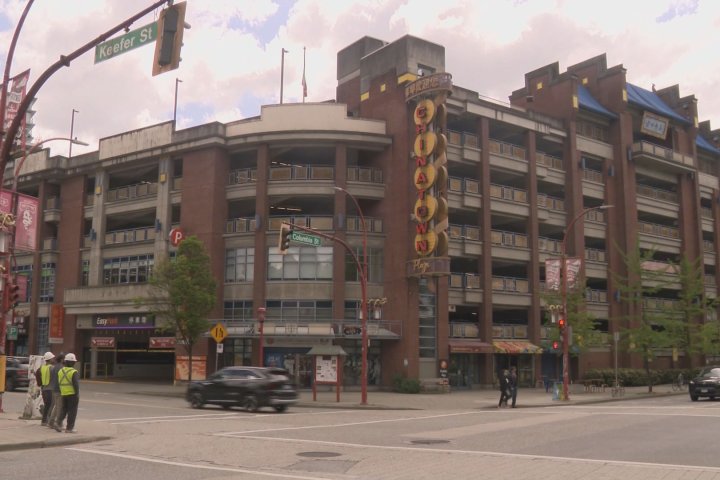
A statement from her publicist, Judith A. Moose, said the cause of Ms. Cara’s death was not immediately known. The Pinellas County Sheriff’s Office confirmed it responded to a call to an address in Largo, which is listed in public records as Ms. Cara’s residence. The District 6 Medical Examiner’s Office, which serves Pinellas County, did not immediately respond to a request for comment.
Ms. Cara’s imprint on pop culture has lived on through the decades as “Fame” (1980) and “Flashdance” (1983) became touchstones for the 1980s with their music and style, including the urban chic of New York teens in “Fame” and the free-form moves and leg warmers (and, of course, the famous wet-and-wild shower scene) of “Flashdance.”
Ms. Cara’s “Flashdance … What a Feeling” still ranks No. 38 on Billboard’s All-Time Hot 100 Songs nearly 40 years later. And it seems to keep finding new audiences through reboots, social media retro clips and spoofs.
On “Fame” — playing Coco Hernandez, one of the students auditioning for New York’s High School for the Performing Arts — she did songs including the title track with its booming refrains such as “I’m gonna live forever. Baby, remember my name.” (The film won an Academy Award for best original score.)
Ms. Cara then won her own Oscar for “Flashdance … What a Feeling,” which she co-wrote in an afternoon session after being asked to sing some of the tracks for the film starring Jennifer Beals as a welder by day and erotic dancer by night who dreams of the ballet stage.
Ms. Cara never regained such heights, however. In 1985, she opened a legal action seeking $10 million from a record company executive, Al Coury, claiming he took advantage of her trust with “unjust and oppressive” contracts for movie and recording deals that cut her out of significant royalty income.
Ms. Cara originally signed a six-year recording deal in 1980 with RSO Records Inc. when Coury was its president. He left in early 1981 to form his own company, Network Records Inc., and persuaded Ms. Cara to give him exclusive control over her career. What happened next became a combination of flawed management, bad choices and Ms. Cara’s inability to recapture the magic of her two hit projects.
Her main studio albums — 1982’s “Anyone Can See” and 1983’s “What a Feelin’ ” — didn’t match the commercial successes of the film singles. She then signed on for films that were quickly forgotten such as “D.C. Cab” (1983) with the mohawk-sporting 1980s star Mr. T.
An album, “Carasmatic,” was originally shelved and finally released in 1987. By the early 1990s, she was a celebrity footnote and a trivia question. “Remember Irene Cara?” wrote syndicated gossip columnist Liz Smith in a 1993 column that claimed Ms. Cara earned just $183 in royalties in her four years under Coury.
Earlier that year, a Los Angeles jury awarded her $1.5 million in her suit against Coury.
“It took me eight years to get through the whole good ol’ boy network in the music industry,” she said in a 2018 interview with the music site Songwriter Universe, “because it seemed that I sued one man and it just kind of spiraled into the entire industry turning against me because of it. So it turned me off to the music business entirely.”
After years of playing supporting roles in various films — but with no breakthrough successes with critics or at the box office — Ms. Cara returned to music in 2011 with an all-female band, Hot Caramel. One of its songs, “Life in the Fast Lane,” appears to offer some of Ms. Cara’s reflections on her own stardom and struggles — with a “steel” line taken right from “Flashdance.”
“All alone I have cried/silent tears of pride,” she sang. “In a world made of steel.”
Musical family
Irene Escalera was born March 18, 1959, in the Bronx as the youngest in a family with a growing musical portfolio. Her father, Gaspar Escalera, was a saxophone player in a popular mambo band. Her stepbrother was involved in opera and her sister played piano, she recalled.
When she was 7 years old, Ms. Cara sang with her father’s band at nightclubs and landed a part in an off-Broadway show based on “The Legend of Sleepy Hollow” — while also rearranging parts of her last name into a shortened version, Cara. From there, her résumé was moving in various directions by the time she was 12.
She had an album of Spanish songs, was part of a tribute to Duke Ellington at Madison Square Garden, had a small role in the 1968 Broadway musical “Maggie Flynn” starring Shirley Jones, and was part of the original cast of the groundbreaking PBS children’s show “The Electric Company” with co-stars including Rita Moreno, Morgan Freeman and Bill Cosby. (She called Cosby “lovely to all of us kids” with no hint of inappropriate behavior.)
In 1976, Ms. Cara had star billing as Sparkle Williams in the musical film “Sparkle” about a rising “girl group” in Harlem. The film was not a major hit, but it gained a strong following among Black audiences and inspired a 2012 remake starring Jordin Sparks and Whitney Houston.
In “Fame,” Ms. Cara was cast as Coco Hernandez, a New York girl with a quick wit and sharp tongue to go with it.
“So, you like art movies, huh, Coco?” a student asks.
“Oh, Antonioni and those people?” Coco replies. “Sure. I mean it beats watching ‘Laverne and Shirley,’ right?”
Besides the title song, she performed the musical’s other big hit, “Out Here on My Own.” She said that some critics claimed she was trying too hard to sound like the disco queen Donna Summer. She found it a compliment.
“Honestly,” she said later, “I made a decision as a young actress to emulate Donna. First of all, we shot some of the ‘Fame’ scenes to her song, ‘Hot Stuff.’ ”
When Paramount Studios contacted her for “Flashdance,” the lyrics of the potential signature song were still a work in progress. Over a few hours one afternoon, she worked with drummer and songwriter Keith Forsey to finish the song, which including the line “now I’m dancing for my life.” The song still didn’t have a name, though.
“We left Paramount after seeing the clips and got in the car,” she told the Associated Press in 1984. “I remember saying to [Forsey], ‘Let’s talk about the feeling of the dance.’ Out of those words and ‘dancing for my life’ came the song, ‘Flashdance … What a Feeling.’ ”
The song led a number of hits from the film, including “Maniac” and “Lady, Lady, Lady.” It became for Ms. Cara “a metaphor about a dancer, how she’s in control of her body when she dances and how she can be in control of her life.” (The song also earned her two Grammy Awards.)
Ms. Cara married stuntman Conrad Palmisano in 1986 and they divorced in 1991. She is survived by a sister. Complete information on survivors was not immediately available.
After “Flashdance,” Ms. Cara was hailed by music magazines and other outlets as the year’s top female singer amid predictions about what would come next. At the Academy Awards ceremony in 1984, Ms. Cara was beaming and looked confident.
“I was putting on a face of being on top of the world and being a success, and on the inside I was trying to figure out how to sue my label,” she said in the 2018 interview. “So it was hard. … I put up that everything was fine when everything was falling apart.”
Thomas Floyd contributed to this report.



